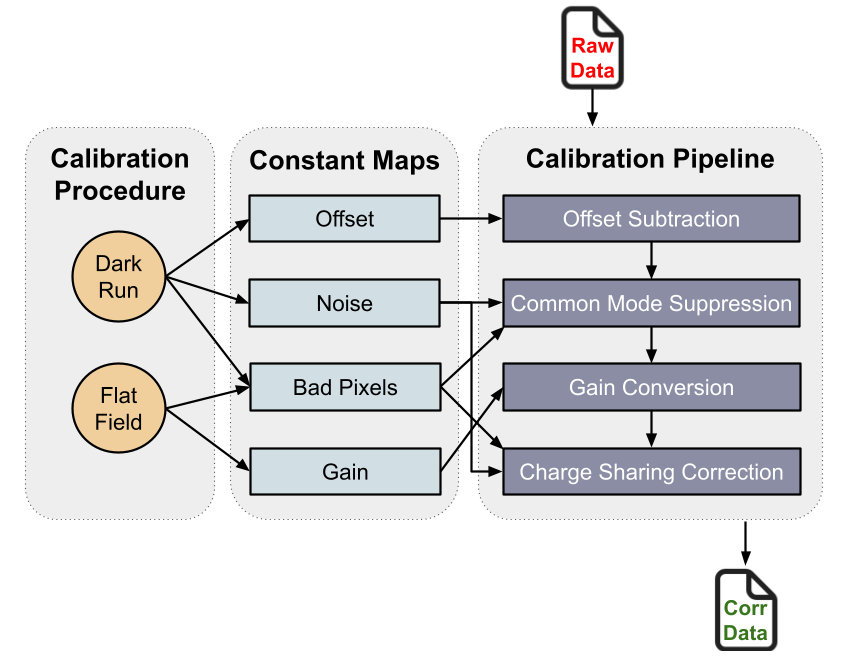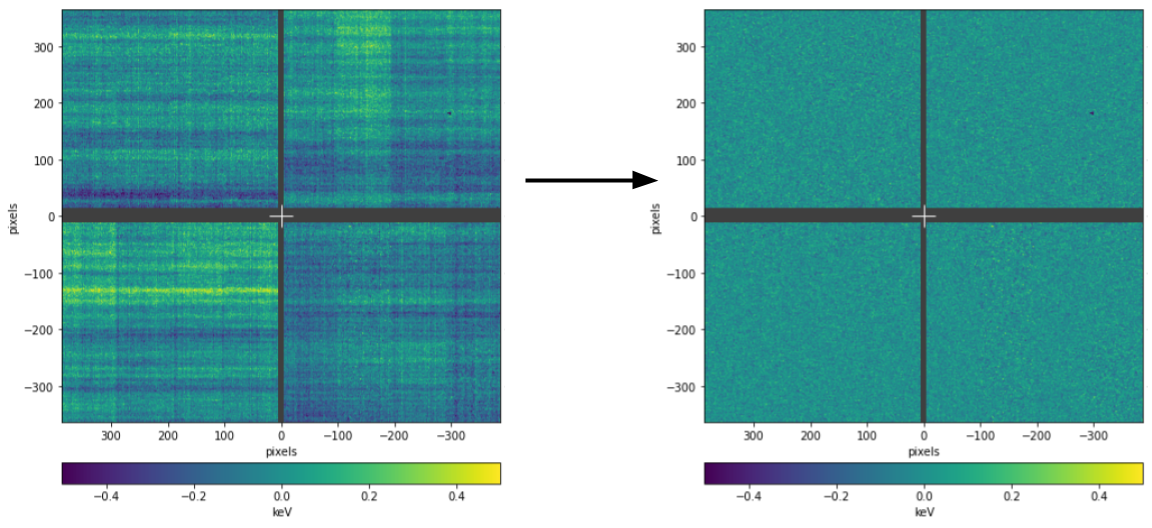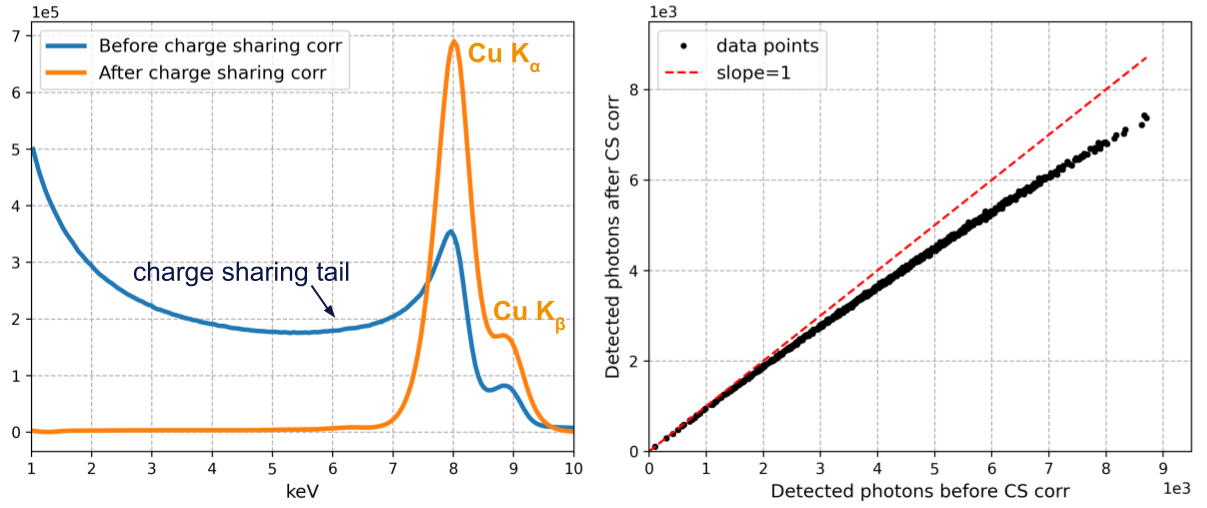Calibration & Correction¶
An outline of the correction pipeline deployed to convert raw data into corrected proc data is given in this section. The general processes for generating calibration constants via darks and flat-field acquisitions are similar to other detectors, as are the typical offset subtraction and gain conversion steps. Here are only emphasized the less usual common mode and charge sharing correction. A more detailed overview of the calibration and data correction procedures of ePix100 at the European XFEL detectors can be found in [1].
Correction pipeline¶
The figure below illustrates a scheme of the correction pipeline used to correct data from ePix100, and the respective constant maps used at every stage.

Because offset depends on bias voltage, temperature, and exposure time, a new set of dark runs must be taken whenever at least one of these conditions changes. In particular, the exposure time has the most significant influence on the offset, following a linear dependence. It is also recommended to take darks whenever the detector is power cycled, and regularly throughout a shift. Offset maps generated many hours ago may no longer be adequate for offset subtraction. In particular, a ring pattern on each ASIC may start to be visible in the corrected images if the offset map is relatively old (see Troubleshoot section).
Common Mode Correction¶
Common mode is a specific type of noise that originates from voltage fluctuations in the readout electronics. Consequently, pixels that share part of the electronic chain are affected similarly, resulting in a pattern of vertical and horizontal stripes superimposed on the measured signal. Since this pattern changes from frame to frame, a constant map cannot be calculated and applied to correct for it. Nonetheless, common mode can still be corrected by calculating the median value of each row/column of pixels and subtracting it from the respective row/column. This is done separately for each ASIC since they have independent readouts, looping over every column and then over every row. The figure below illustrates the effect of common mode on a dark image and how correcting it helps reducing the overall detector noise. Overall noise reduction after common mode correction can be as high as ∼20%.

To apply common mode correction to photon-illuminated images, lit pixels, defined as those with signal above a set threshold, are masked to exclude them from the computed medians. Common mode correction is only applied if a representative sample of pixels in a given column/row (at least 25%) are dark.
Charge Sharing Correction¶
Although the electron-hole pairs generated by the photoelectric effect have a negligible initial spread, the charge cloud progressively expands as charges drift towards the pixels due to electrostatic repulsion and diffusion in the sensor. Consequently, some photon hits may result in charge being shared by clusters of up to 4 pixels, depending on the photon absorption position. With a pixel size of 50 µm, charge sharing effect is typically clearly noticeable on ePix100.
The full energy photon peak can be reconstructed using an algorithm that starts by identifying pixels with energy above a primary threshold and defining a 3×3 pixel mask around them. If two neighbouring pixels meet this condition, the mask is centred around the pixel with higher value. Within the mask, all pixels with energy above a lower secondary threshold are identified. If their distribution matches a valid charge sharing pattern geometry, their values are summed, and the result is assigned to the central pixel, while all others are set to zero. However, if separate charge patterns overlap or are adjacent, meaning that some of these pixels likely captured charge from at least two different photons, charge sharing correction is not applied, as it is impossible to discriminate the contribution of each individual photon to each of the clusters. Consequently, these pixels are also set to zero. This limitation implies that charge sharing correction is most effective for low photon fluxes, where the probability of finding overlapping or adjacent clusters is minimal. As the photon flux increases, more individual photons cannot be resolved, and they are lost after this correction step. This effect is illustrated in the right-side plot of the figure below.

Processed CORR data files are exported with two sets of corrected data: one with charge sharing correction applied (data.image.pixels_classified) and one without (data.image.pixels), so that the most adequate dataset may be chosen for each specific case.
References¶
| [1] | N. Duarte, et al. Calibration procedures and data correction of ePix100 detectors at the European XFEL, JINST 18.11 (2023) C11008 |